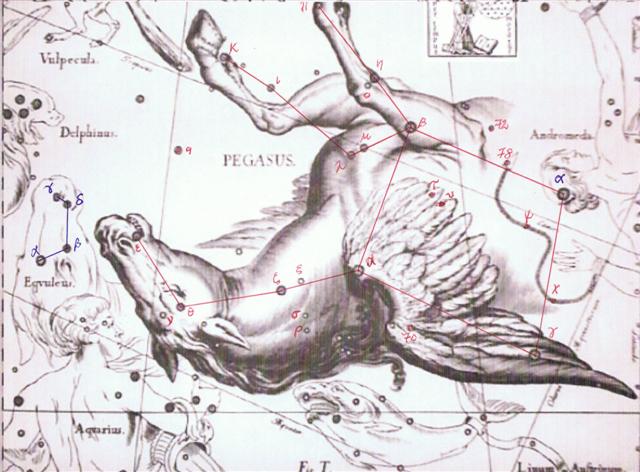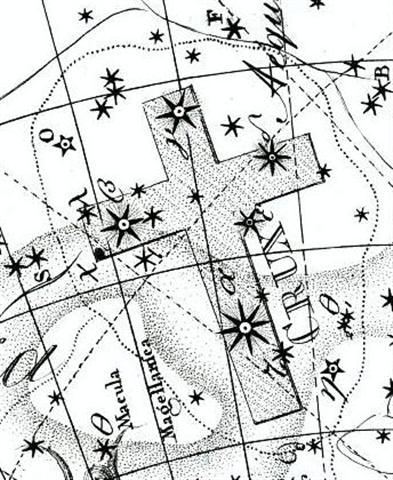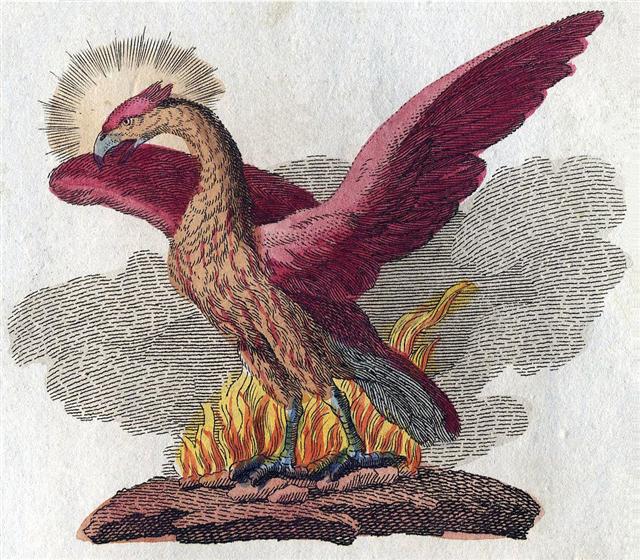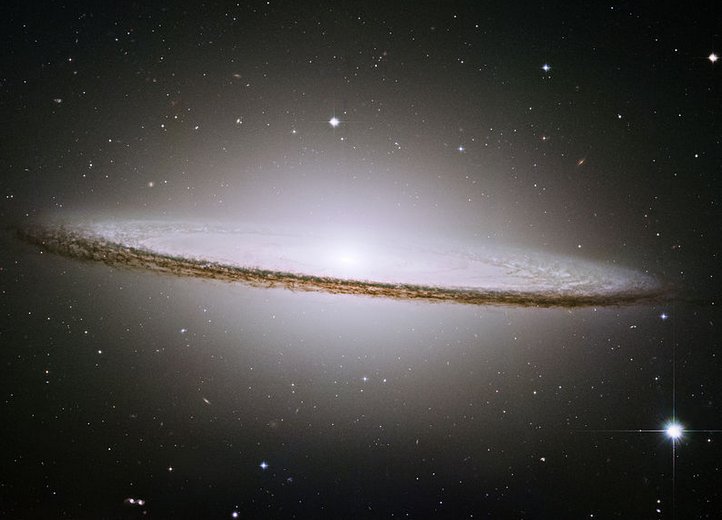172. Evidently the C text
could have been
created by carefully coordinating such
things as myths,
stars, dates, and numbers, and we could then
quickly draw the conclusion that 740 (the total number of
glyphs on the tablet) was expressing twice a year
with 365 days together with twice 5 nights for Nut
added.
... Nut, whom the Greeks sometimes
identified with Rhea, was goddess of the
sky, but it was debatable if in historical
times she was the object of a genuine cult.
She was Geb's twin sister and, it was said,
married him secretly and against the will of
Ra. Angered, Ra had the couple brutally
separated by Shu and afterwards decreed that
Nut could not bear a child in any given
month of any year. Thoth, Plutarch tells us,
happily had pity on her. Playing draughts
with the Moon, he won in the course of
several games a seventy-second part of the
Moon's light with which he composed five new
days. As these five intercalated days did
not belong to the official Egyptian calendar
of three hundred and sixty days, Nut was
thus able to give birth successively to five
children: Osiris, Haroeris (Horus), Set,
Isis and Nepthys ...
Her first 3 children, Osiris, Horus, and
Set, i.e. her male children, could have been
created for the main season of the year
before the beginning of October, and her
pair of daughters, Isis and Nephtys, for the
following time after
the end of September. Set was her last boy
and his name suggests the Sun
was setting in autumn.
We should here document the end of side b
with a few more details:
 |
 |
|
Cb14-1 (330) |
Cb14-2 (723 = 40 * 18 + 3) |
|
Kua pu ia |
tagata ariga erua |
|
Ariga.
Face, cheek. 1. Ariga ora,
(lit. 'living face') keepsake,
memento, memory, souvenir (of
someone). This used to be the name
given the moai (stone
statues) carved as memories of the
dead. 2. Ariga ora is also
used in the generic sense of a
memento, a keepsake: he mate te
matu'a he ato tepoki i te rîu o
toona matu'a; he-ariga ora o toona
matu'a [when] the father dies,
[and] the son sings a riu for
his father, this constitutes an
ariga ora of his father. Vanaga.
Face, aspect, expression, mien,
visage, stature, superficies. T Ma.:
aria, to resemble.
Hakaariga, to encroach.
Churchill.
Ariari, sharp, the edge of a
sword. Ta.: ariari,
transparence, brightness. Ha.:
aliali, white. Churchill. Ali,
s. Haw., a scar on the face;
ali-ali, to be scarred;
aali, a small, low place between
two larger or higher ones; pu-ali,
a place compressed, a neck of land,
an isthmus; pu-ale, a ravine.
N. Zeal., pu-are, a hollow,
open place. Tah.: ari, a
great deep or hollow; adj.
empty, as the stomach; v. to
soop out, to hollow; ariari,
thin, worn-out. Sanskr., arus,
a wound; îrma, id.; îrina,
notch, furrow. Swed., ärr,
scar. (Fornander) |
|
INVISIBLY CLOSE TO THE SUN NORTH OF
THE EQUATOR: |
|
GIAUZAR (Poison Place) = λ Draconis
(174.0), ξ Hydrae (174.3), ο²
Centauri, λ Centauri (174.8) |
θ Crateris (175.0), υ Leonis
(175.2), ω Virginis (175.3), ι
Crateris (175.5) |
|
Sept 11
(254) |
12 (*175) |
|
JULY 9 (190) |
10 (*111 = *294 - 183) |
|
170 = 254 - 64 - 20 |
171 = *111 + 60 = 354 - 183 |

... Sir James Frazer, like Gwion,
has pointed out the similarity of
'door' words in all Indo-European
languages and shown Janus to be a
'stout guardian of the door' with
his head pointing in both
directions. As usual, however, he
does not press his argument far
enough. Duir as the god of the oak
month looks both ways because his
post is at the turn of the year;
which identifies him with the
Oak-god Hercules who became the
door-keeper of the Gods after his
death. He is probably also to be
identified with the British god Llyr
of Lludd or Nudd, a god of the sea -
i.e. a god of a sea-faring Bronze
Age people - who was the 'father' of
Creiddylad (Cordelia) an aspect of
the White Goddess; for according to
Geoffrey of Monmouth the grave of
Llyr at Leicester was in a vault
built in honour of Janus. Geoffrey
writes: Cordelia obtaining the
government of the Kingdom buried her
father in a certain vault which she
ordered to be made for him under the
river Sore in Leicester (Leircester)
and which had been built originally
under the ground in honour of the
god Janus. And here all the
workmen of the city, upon the
anniversary solemnity of that
festival, used to begin their yearly
labours
... |
|
CLOSE TO THE FULL MOON
ON EASTER ISLAND: |
|
ι
Phoenicis (357.3), ι Piscium
(357.4), λ Andromedae (357.9) |
λ
Piscium (358.0),
MANUS CATENATA
(Chained Hand) = ι Andromedae
(358.1),
ALRAI (Shepherd) = γ Cephei,
θ Phoenicis (358.4), κ Andromedae
(358.7) |
|
March 12 (*357) |
13 (72) |
|
JAN 7 (= 71 - 64) |
8 (*294 = *358 - 64) |
|
353 = *357 - 4 |
354 = *294 + 60 |

... When the Sun in March 14 (73,
3-14 as in
π)
reached Manus Catenata, the Chained
Hand of Andromeda, it meant the Full
Moon would be at Virgo in September
14 (*177 = 6 * 29½). The Sun had 2
wives, one high up in the north and
the other one down at the equator.
Anciently, at the time when
α
Columbae (Phakt
→ Phekda,
γ Ursae Majoris, 'Thigh') had
been at 0h, the head of Virgo had
arrived after the summer solstice (in
day 84 + 88 = 172) and
the right hand of Andromeda had been
chained at the December solstice (in
day 12 * 29½ + 1 = 355 = 172 + 183).
At the time of rongorongo, however,
Virgo and Andromeda had advanced in
the Sun calendar with 84 days (14
weeks) + 4 days (because of the change
from the date of the Julian spring equinox to
that of the Gregorian spring equinox). Therefore ξ Virginis
was now in day
257 (= *177 + 80) = September 14.
But due to how Gregory XIII had
omitted to correct in his new
calendar for the effects of the
precession before the Council of
Nicaea (AD 325 as in
3-25 → Julian equinox) the date
should rather have been day 260 =
172 + 88 (= 84 + 4) = 257 + 3.
... Vainamoinen set about building a
boat, but when it came to the prow
and the stern, he found he needed
three words in his rune that he did
not know, however he sought for
them. In vain he looked on the heads
of the swallows, on the necks of the
swans, on the backs of the geese,
under the tongues of the reindeer.
He found a number of words, but not
those he needed. Then he thought of
seeking them in the realm of Death,
Tuonela, but in vain. He escaped
back to the world of the living only
thanks to his potent magic. He was
still missing his three runes. He
was then told by a shepherd to
search in the mouth of Antero
Vipunen, the giant ogre. The road,
he was told, went over swords and
sharpened axes. Ilmarinen made
shoes, shirt and gloves of iron for
him, but warned him that he would
find the great Vipunen dead.
Nevertheless, the hero went. The
giant lay underground, and trees
grew over his head. Vainamoinen
found his way to the giant's mouth,
and planted his iron staff in it.
The giant awoke and suddenly opened
his huge mouth. Vainamoinen slipped
into it and was swallowed. As soon
as he reached the enormous stomach,
he thought of getting out. He built
himself a raft and floated on it up
and down inside the giant.
The giant felt tickled and told him
in many and no uncertain words where
he might go, but he did not yield
any runes. Then Vainamoinen built a
smithy and began to hammer his iron
on an anvil, torturing the entrails
of Vipunen, who howled out magic
songs to curse him away. But
Vainamoinen said, thank you, he was
very comfortable and would not go
unless he got the secret words. Then
Vipunen at last unlocked the
treasure of his powerful runes. Many
days and nights he sang, and the sun
and the moon and the waves of the
sea and the waterfalls stood still
to hear him. Vainamoinen treasured
them all and finally agreed to come
out. Vipunen opened his great jaws,
and the hero issued forth to go and
build his boat at last
...
And Andromeda was no longer forced
to stand still but was free from her
chains and moving quickly a week
before 0h. |
 |
 |
 |
 |
|
Cb14-3 (332) |
Cb14-4
(→ 12 * 12) |
Cb14-5 (→ 290 / 2) |
Cb14-6 (727 = 392 + 335) |
|
te marama |
te ika |
kua puo te pouo -
vai o maú hia |
manu noi |
|
INVISIBLY CLOSE TO THE SUN NORTH OF
THE EQUATOR: |
|
ο Hydrae (176.1) |
ζ Crateris,
ξ Virginis
(177.0), λ
Muscae (177.1), ν Virginis (177.2),
μ Muscae (177.8) |
Al Sarfah-10 (The Turn) /
Uttara Phalguni-12 /
Zibbat A.-16 (Tail of the Lion)
/ Shēpu-arkū sha-A-17 (Hind
Leg of the Lion)
93 LEONIS
(178.0),
DENEBOLA
= β Leonis
(178.3),
ALARAPH
= β Virginis
(178.6) |
PHEKDA
('Thigh') = γ Ursae Majoris,
β Hydrae (179.3), η Crateris
(179.9) |
|
Egyptian djed |
 |
Phoenician
sāmekh |
 |
Greek
xi |
Ξ
(ξ) |
|
...
In rongorongo times
the last Greek
lettered star
in Orion (ξ)
rose with the Sun in
June 21. The letter
seems to have
originated from the
Phoenician letter
samekh (tent
peg, supporting
prop), which in turn
may have been
derived from the
ancient Egytian
djed column ...
 |
|
|
Sept 13 |
14 (*177 = *360 - 183) |
15 |
16 (259 = 76 + 183) |
|
JULY 11
(192 = 8 * 24) |
12 |
13 (*114 = 6 * 19) |
14 |
|
172 = 355 - 183 |
173 = *93 + 80 |
174 = 114 + 60 |
175 = 350 / 2 |

... Ishtar, scorned, goes up to
heaven in a rage, and extracts from
Anu the promise that he will send
down the Bull of Heaven to avenge
her. The Bull descends, awesome to
behold. With his first snort he
downs a hundred warriors. But the
two heroes tackle him. Enkidu takes
hold of him by the tail, so that
Gilgamesh as espada can come
in between the horns for the kill.
The artisans of the town admire the
size of those horns: 'thirty pounds
was their content of lapis lazuli'.
(Lapis lazuli is the color sacred to
Styx, as we have seen. In Mexico it
is turquoise.) Ishtar appears on the
walls of Uruk and curses the two
heroes who have shamed her, but
Enkidu tears out the right thigh of
the Bull of Heaven and flings it in
her face, amidst brutal taunts. It
seems to be part of established
procedure in those circles. Susanowo
did the same to the sun-goddess
Amaterasu, and so did Odin the Wild
Hunter to the man who stymied him
...
 |
|
CLOSE TO THE FULL MOON
ON EASTER ISLAND: |
|
ω
Aquarii (359.2),
78 Pegasi
(359.5) |
ψ
Andromedae (360.1), σ Phoenicis
(360.4) |
γ¹ Oct.
(361.4), φ Pegasi (361.7) |
DZANEB = ω Piscium
(362.4), γ² Oct. (362.8) |
|
March 14 (π) |
15 (*360 = *366 - 6) |
16 (75) |
17 (4 * 19) |
|
JAN 9 (*295 = *359 - 64) |
10 |
11 |
12 (378 = *362 + 16) |
|
355 = *359 + 80 - 84 |
356 |
357 |
358 |
 |
 |
 |
 |
 |
|
Cb14-7 (336 = 2 * 168) |
Cb14-8 (→
148 = 364 - 216) |
Cb14-9 (730) |
Cb14-10 |
|
ku hakarava |
kotia hia |
kua haro te rima |
te marama |
|
Koti.
Kotikoti. To cut with scissors
(since this is an old word and
scissors do not seem to have
existed, it must mean something of
the kind). Vanaga.
Kotikoti. To
tear; kokoti, to cut, to
chop, to hew, to cleave, to
assassinate, to amputate, to scar,
to notch, to carve, to use a knife,
to cut off, to lop, to gash, to mow,
to saw; kokotiga kore,
indivisible; kokotihaga,
cutting, gash furrow. P Pau.:
koti, to chop. Mgv.: kotikoti,
to cut, to cut into bands or slices;
kokoti, to cut, to saw;
akakotikoti, a ray, a streak, a
stripe, to make bars. Mq.: koti,
oti, to cut, to divide. Ta.:
oóti, to cut, to carve;
otióti, to cut fine. Churchill.
Pau.: Koti, to
gush, to spout. Ta.: oti, to
rebound, to fall back. Kotika,
cape, headland. Ta.: otiá,
boundary, limit. Churchill.170. The 5th and last pair of
niu glyphs came 36 days after
Cb12-18:
 |
 |
|
koti |
Cb14-8 |
Maybe Cb14-8
alludes to May 28 (day 148):

... This pot depicts one of the Hero
Twins (One-Ahaw in the Classic texts
and One-Hunaphu in the K'iche' Popol
Vuh) and a great bird who is trying
to land in a huge ceiba tree heavy
with fruit. This mythical bird is
Itzam-Yeh, Classic prototype of
Wuqub-Kaqix, 'Seven-Macaw',
of Popol Vuh fame. In that story, in
the time before the sky was lifted
up to make room for the light, the
vainglorious Seven-Macaw imagined
himself to be the sun. Offended by
his pride, the Hero Twins humbled
him by breaking his beautiful
shining tooth with a pellet from
their blowgun. This pot shows
One-Ahaw aiming at the bird as he
swoops down to land in his tree. As
Itzam-Yeh lands on his perch,
the text tells us he is 'entering or
becoming the sky'.
This particular 'sky-entering' is
not the one mentioned in the
Palenque text. It is the final event
that occurred in the previous
creation before the universe was
remade. Before the sky could be
raised and the real sun revealed in
all its splendor, the Hero Twins had
to put the false sun, Itzam-Yeh,
in his place. If the date on this
pot corresponds to that
pre-Columbian event, as we believe
it does, then Itzam-Yeh was
defeated on 12.18.4.5.0.1 Ahaw
3 K'ank'in (May 28, 3149
B.C.). After the new universe was
finally brought into existence,
First Father also entered the sky by
landing in the tree, just as
Itzam-Yeh did
... |
|
INVISIBLY CLOSE TO THE SUN NORTH OF
THE EQUATOR: |
|
no star listed (180) |
π Virginis (181.0), θ Crucis (181.5) |
12h (182.6)
ο Virginis (182.1), η Crucis (182.5) |
ALCHITA
= α Corvi,
MA WEI (Tail of the Horse) = δ
Centauri
(183.1),
MINKAR (Beak) = ε Corvi
(183.7), ρ Centauri (183.9) |
|
Sept 17 (260) |
18 (261
= 9 * 29) |
19 (*182) |
20 |
|
JULY 15 (196 = 4 * 49) |
16 (14 + 183) |
17 (*118 = 177 - 59) |
18 |
|
176 = 260 - 84 |
177 = 354 / 2 |
178 = 118 + 60 |
179 |
|
CLOSE TO THE FULL MOON
ON EASTER ISLAND: |
|
η
Tucanae (363.0), ψ Pegasi
(363.1),
32 Piscium
(363.2),
π Phoenicis (363.4), ε Tucanae
(363.6), τ Phoenicis (363.9) |
θ Oct.
(364.4) |
 |
Al
Fargh al Thāni (Rear Spout)-25
SIRRAH
(Navel of the Horse) = α Andromedae,
CAPH (Hand) = β Cassiopeiae
(0.5), ε Phoenicis, γ³ Oct. (0.8) |
|
March 18 |
19 (78 = 261 - 183) |
20 |
0h (*366) |
|
JAN 13 |
14 (= 78 - 64) |
15 |
16 (*302 = *366 - 64) |
|
359 |
360 |
361 |
362 |
|
... Ecclesiastically, the equinox is
reckoned to be on 21 March (even
though the equinox occurs,
astronomically speaking, on 20 March
in most years) ... |
 |
 |
 |
|
Cb14-11
(732) |
Cb14-12 |
Cb14-13 (342) |
|
ku kikiu |
tagata |
kua to i te heke |
|
Kikiu. 1.
Said of food insufficiently cooked
and therefore tough: kai kikiu.
2. To tie securely; to tighten the
knots of a snare: ku-kikiu-á te
hereíga, the knot has been
tightened. 3. Figuratively: mean,
tight, stingy; puoko kikiu. a
miser; also: eve kikiu. 4. To
squeak (of rats, chickens).
Kiukiu, to chirp (of chicks and
birds); to make short noises. The
first bells brought by the
missionaries were given this name.
Vanaga.
Kiukiu (kikiu). 1. To
resound, to ring, sonorous, bell,
bronze; kiukiu rikiriki, hand
bell; tagi kiukiu, sound of a
bell; kikiu, to ring, the
squeeking of rats; tariga kikiu,
din, buzzing; hakakiukiu, to
ring. Mgv.: kiukiu, a thin
sound, a soft sweet sound. 2. To
disobey, disobedience; mogugu
kiukiu, ungrateful; ka kikiu
ro, to importune. Churchill. |
|
INVISIBLY CLOSE TO THE SUN NORTH OF
THE EQUATOR: |
|
PÁLIDA (Pale) = δ Crucis
(184.6),
MEGREZ (Root of the Tail) = δ Ursae
Majoris
(184.9) |
Hasta-13 (Hand or Fist) /
Chariot-28 (Worm)
GIENAH
(Wing) = γ Corvi
(185.1),
ε Muscae (185.2),
ζ
Crucis (185.4),
ZANIAH (Corner) = η Virginis
(185.9) |
CHANG SHA
(Long Sand-bank) = ζ Corvi
(186.3) |
|
Sept 21 (*184) |
Equinox |
23 (266 = 83 + 183) |
|
JULY 19 (*120) |
20 |
21 (202 = 266 - 64) |
|
180 |
181 |
182 |
|
... After the great flood had at
long last receded, Raven had gorged
himself on the delicacies left by
the receding water, so for once,
perhaps the first time in his life,
he wasn't hungry. But his other
appetites, his curiosity and the
unquenchable itch to meddle and
provoke things, to play tricks on
the world and its creatures, these
remained unsatisfied. Raven gazed up
and down the beach. It was pretty,
but lifeless. There was no one about
to upset, or play tricks upon. Raven
sighed. He crossed his wings behind
him and strutted up and down the
sand, his shiny head cocked, his
sharp eyes and ears alert for any
unusual sight or sound. The
mountains and the sea, the sky now
ablaze with the sun by day and the
moon and stars he had placed there,
it was all pretty, but lifeless.
Finally Raven cried out to the empty
sky with a loud exasperated cry. And
before the echoes of his cry faded
from the shore, he heard a muffled
squeak. He looked up and down the
beach for its source and saw
nothing. He strutted back and and
forth, once, twice, three times and
still saw nothing. Then he spied a
flash of white in the sand. There,
half buried in the sand was a giant
clamshell. As his shadow fell upon
it, he heard another muffled squeak.
Peering down into the opening
between the halves of the shell, he
saw it was full of tiny creatures,
cowering in fear at his shadow ...
 |
|
CLOSE TO THE FULL MOON
ON EASTER ISLAND: |
|
Uttara Bhādrapadā-27
(2nd of the Blessed Feet) /
Wall-14 (Porcupine)
ο
Oct. (1.3),
ALGENIB PEGASI
= γ Pegasi
(1.8) |
χ
Pegasi (2.1),
θ Andromedae (2.7) |
σ
Andromedae (3.0), ι Ceti (3.3), ζ
Tucanae (3.5), ρ Andromedae, π
Tucanae (3.7) |
|
March
22 (*1) |
23 |
24 (83) |
|
JAN 17
(*303) |
18
(384) |
19 |
|
363 |
364 |
365 |
|
... There could have been 30 dark
nights from 12 * 29½ = 354 (DECEMBER
20) to JANUARY 19 (on average the
coldest day of the year north of the
equator) ... |
 |
 |
 |
|
Cb14-14 (735) |
Cb14-15 (723 + 13)
|
Cb14-16 (345) |
|
tagata tui i tona
ika |
manu puoko
erua |
te manu - e noi koe
te manu |
|
INVISIBLY CLOSE TO THE SUN NORTH OF
THE EQUATOR: |
|
INTROMETIDA (Inserted) = ε Crucis
(187.4),
ACRUX
= α Crucis
(187.5) |
γ Com. Berenicis (188.0), σ Centauri
(188.1),
ALGORAB = δ Corvi
(188.5),
GACRUX = γ Crucis
(188.7) |
γ Muscae (189.0),
AVIS SATYRA (Bird of the Satyrs) = η Corvi
(189.3),
ASTERION (Starry) = β Canum Ven.
(189.5),
KRAZ = β Corvi,
κ Draconis (189.7) |
|
Sept 24 (267) |
25 (*188
= *5 + *183) |
26 |
|
22 / 7 (π) |
JULY 23 (*124 = *188 - *64) |
24 (205 = 22 + 183) |
|
183 |
184 |
185 |
 |
|
CLOSE TO THE FULL MOON
ON EASTER ISLAND: |
|
no star
listed (4) |
ANKAA
= α Phoenicis,
κ Phoenicis (5.0)
ALPHARD
(α Hydrae) |
λ
Phoenicis (6.3), β Tucanae (6.4) |
|
Julian equinox
(*4) |
March 26 (85) |
27 |
|
JAN
20 |
21 (= 85 - 64) |
22 |
|
0 |
1 |
2 |
 |
 |
 |
 |
|
Cb14-17 (346) |
Cb14-18 |
Cb14-19 (740) |
|
kokoti hia te henua |
tagata hakaitiiti |
i te henua |
|
INVISIBLY CLOSE TO THE SUN NORTH OF
THE EQUATOR: |
|
α Muscae (190.2),
τ Centauri (190.5), χ Virginis
(190.7)
ALDERAMIN (α Cephei) |
Al Áwwā'-11 /
Shur-mahrū-shirū-18 (Front
or West Shur?)
SOMBRERO GALAXY = M104 Virginis
(191.1), ρ Virginis (191.4),
PORRIMA = γ
Virginis,
γ Centauri (191.5) |
ι Crucis (192.2),
β Muscae (192.5),
MIMOSA = β Crucis
(192.9) |
|
Sept 27 (270 = 273 - 3) |
28 |
29 (*192 = 2 * 136 - 80) |
|
JULY 25 |
26 (*127 = *191 - *64) |
27 (208 = 25 + 183) |
|
186 |
187 |
188 |
 |
|
CLOSE TO THE FULL MOON
ON EASTER ISLAND: |
|
ANDROMEDA GALAXY (M31),
π Andromedae (7.7) |
ε
Andromedae (8.2),
DELTA
= δ Andromedae
(8.4),
SCHEDIR (Breast) = α Cassiopeiae
(8.6), ζ Andromedae, μ Phoenicis
(8.9) |
ξ
Phoenicis (9.0), ρ Tucanae
(9.1),
DENEB KAITOS (Tail of the Sea
Beast) = β Ceti,
η Phoenicis (9.4),
AL NITHĀM (String of Pearls) =
φ¹ Ceti
(9.6) |
|
March 28 (*7) |
29 (88) |
30 |
|
JAN 23 |
24 |
25 (390 = 365 + 25) |
|
3 |
4 |
5 |

| |
|
Delta |
δ Andromedae |
8.4 |
March 29 (88) |
|
0 |
- |
Zero |
η Andromedae |
11.4 |
April 1 (91) |
|
1 |
Al Sharatain |
Pair of Signs |
β Arietis (Sheratan),
γ (Mesarthim) |
27.4 |
April 17 (107) |
| |
|
Musca Borealis |
35 (Head of the
Fly), 39
(Kaffaljidhma),Arietis
(Bharani) |
41.4 |
May 1 (121) |
|
2 |
Al Dabarān |
Follower |
α Tauri (Aldebaran),
θ¹, θ²´,
γ (Hyadum I),
δ (Hyadum II), ε
(Ain) |
63.4 |
May 23 (143) |
|
3 |
Al Hak'ah |
White Spot |
λ Orionis (Heka),
φ¹, φ² |
83.4 |
June 12 (163) |
|
4 |
Al Han'ah |
Brand |
γ Gemini (Alhena), μ
(Tejat Posterior),
ν,
η (Tejat Prior),
ξ (Alzirr) |
93.4 |
June 22 (173) |
|
|



























